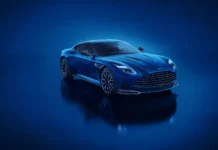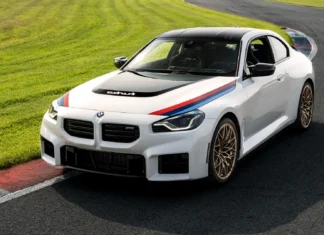Kia is pitching the PV5 and its new platform as a game-changer.
While Kia did give us some insight into its new “Platform Beyond Vehicle” (PBV) architecture, it was through more outlandish concepts like the Weekendr. Now, we’re getting a proper look at the exterior design for the PV5 passenger van — just one of three models (including the small PV1 and larger PV7) the automaker originally announced at least year’s CES in Las Vegas.
We’re seeing some evolution from those original concepts, as Kia unveiled the PV5’s exterior design ahead of its global premiere. Beyond that, this van will go into production in both passenger and cargo variants, much like the Volkswagen ID.Buzz. The PV5 will, in time, be joined by other models in the range, which the company will debut next week during its EV Day. Ahead of that, though, it insists different configurations of the Kia PV5 will “fulfill the diverse needs of a broad customer base by providing unprecedented flexibility and customization through innovative modularity.”
What exactly does that mean? At the moment, some of that sentiment is left open to interpretation (like actual technical specifications, for example). Global design head Karim Habib notes the PV5 continues the brand’s “Opposites United” design ethos, which as a design language has resulted in its funky and futuristic-looking designs from the EV6 and EV9 to everyday sedans like the K5 and K4.
Today’s announcement focuses exclusively on the exterior design, from the snub-nosed front end to the upright running lights and the flat-sided flanks and rear end. The overall shape not only works toward a practical purpose with regard to passenger and cargo space, but it also leans into the fashionable “modular” configuration — a buzz word for scaling a vehicle (particularly an EV) up or down in a relatively easy and cost-effective way. Features like the front-end design and rear-end length past the C-pillar might change, but the general profile including the wheelbase can largely remain the same between models using this production method.
Thanks to some geometric shapes in the bodywork, wheel arches and wheels, the Kia PV5 maintains some level of familiarity with the brand’s electric SUVs, while offering the automaker an opportunity to strike out from what it’s largely done over the past couple decades — small cars and a range of sport utility models — toward something a bit different. Adding in the cargo variant, which will lack the rear glass canopy of the passenger models, is an effort to broaden the PBV platform’s appeal beyond retail customers and into the commercial sphere.
Of course, doing that pitches the Kia EV5 right into the mix of currently available electric vans like the aforementioned ID.Buzz (and the Ford E-Transit as well as the Rivian RCV, Mercedes-Benz eSprinter and Ram ProMaster EV on the cargo side). Whether it will actually gain a foothold depends not only on the public’s willingness to accept its unconventional styling, but also its inevitable price tag, and Kia obviously isn’t sharing that crucial figure just yet.
Hopefully we’ll know more in the coming week, but this gives us a slightly clearer idea of what to expect from that original CES announcement moving forward. In the meantime, check out Roman and Andre’s experience with the PV5-based Weekendr concept below:





























